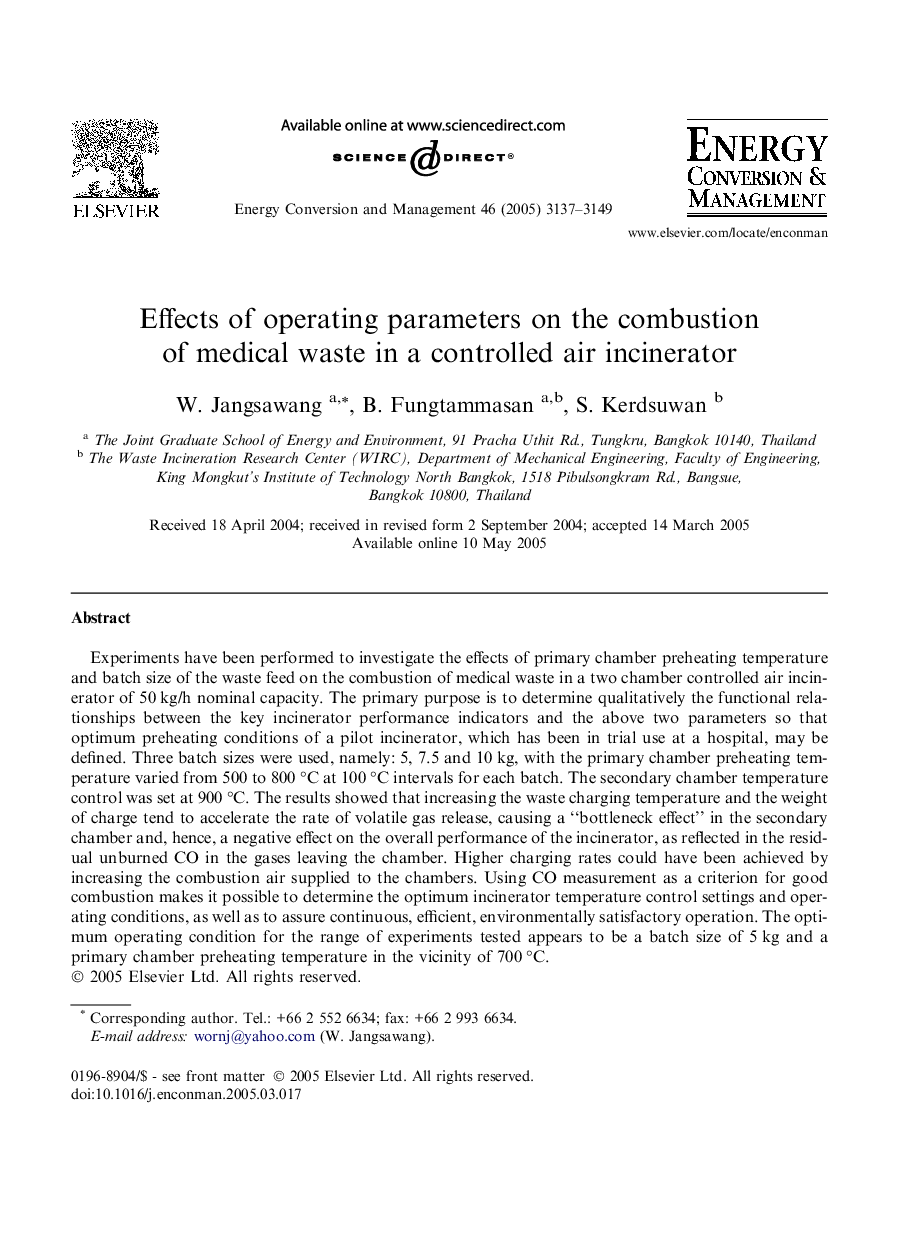| Article ID | Journal | Published Year | Pages | File Type |
|---|---|---|---|---|
| 765784 | Energy Conversion and Management | 2005 | 13 Pages |
Experiments have been performed to investigate the effects of primary chamber preheating temperature and batch size of the waste feed on the combustion of medical waste in a two chamber controlled air incinerator of 50 kg/h nominal capacity. The primary purpose is to determine qualitatively the functional relationships between the key incinerator performance indicators and the above two parameters so that optimum preheating conditions of a pilot incinerator, which has been in trial use at a hospital, may be defined. Three batch sizes were used, namely: 5, 7.5 and 10 kg, with the primary chamber preheating temperature varied from 500 to 800 °C at 100 °C intervals for each batch. The secondary chamber temperature control was set at 900 °C. The results showed that increasing the waste charging temperature and the weight of charge tend to accelerate the rate of volatile gas release, causing a “bottleneck effect” in the secondary chamber and, hence, a negative effect on the overall performance of the incinerator, as reflected in the residual unburned CO in the gases leaving the chamber. Higher charging rates could have been achieved by increasing the combustion air supplied to the chambers. Using CO measurement as a criterion for good combustion makes it possible to determine the optimum incinerator temperature control settings and operating conditions, as well as to assure continuous, efficient, environmentally satisfactory operation. The optimum operating condition for the range of experiments tested appears to be a batch size of 5 kg and a primary chamber preheating temperature in the vicinity of 700 °C.
